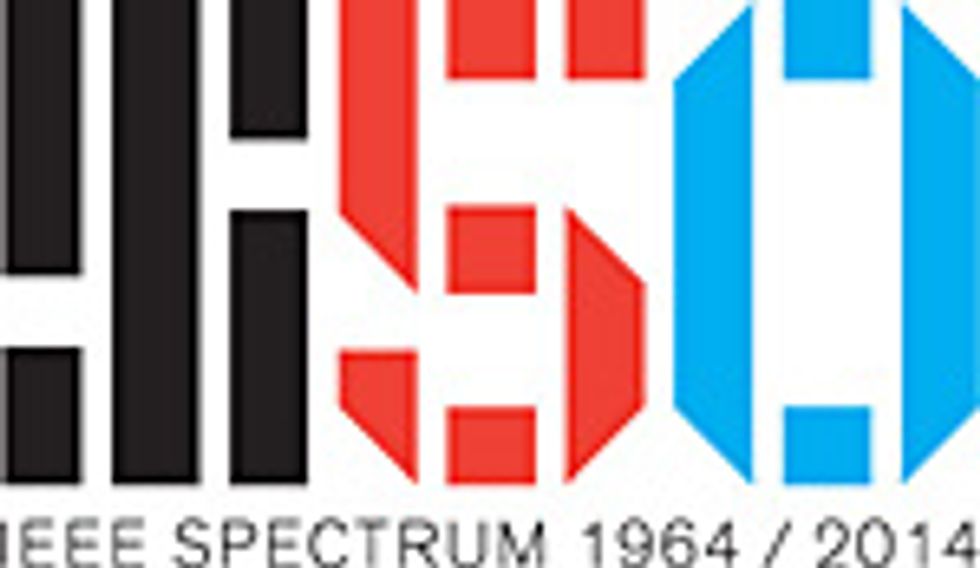Editor’s note: In this 50th-anniversary year of IEEE Spectrum, we are using each month’s Spectral Lines column to describe some pivotal moments of the magazine’s history. Here, Senior Editor Stephen Cass recounts our coverage of the Apollo program.
Forty-five years ago this month, Neil Armstrong became the first human being to walk on the moon. This was the crowning achievement of the Apollo program, the greatest technological adventure in history. From the launch of Sputnik in 1957 to the Apollo 11 mission in 1969, the world watched, enthralled, as the United States and the Soviet Union raced to be the first to land men on the moon.
And that space fever burned brightly at IEEE Spectrum. In the mid-’60s, we averaged about three space-related editorial items in each issue, along with countless references to space exploration in other articles. Items ranged from a short news brief about the difficulties of radio communication on the lunar surface to a long feature dissecting the telemetry and command system of the Mariner Mars probe [PDF]. Wernher von Braun contributed an essay to our December 1965 issue that explained why it was “The Time for Space Exploration” [PDF].
Spectrum had good reason for its enthusiasm: Many of its readers were at the forefront of answering President John F. Kennedy’s challenge to land a man on the moon before 1970. Spectrum issues in those days bulged with recruitment ads for aerospace outfits like the Jet Propulsion Laboratory, Goodyear Aerospace, and the systems engineering division of Bellcom.
Those were heady times. A glorious spacefaring destiny seemed to await, and ideas that would have been considered outrageous science fiction a few years previously were given serious consideration in Spectrum, as in March 1966 with an 11-page article titled “Communication With Extraterrestrial Intelligence” [PDF]. An analysis of what form signals from an alien civilization might take and how we might decode them, this article wasn’t the product of some fringe element. Rather, it was a condensation of presentations and a panel discussion organized by Harold Wooster, a director in the U.S. Air Force Office of Scientific Research, at the 1965 IEEE Military Electronics Conference. Participants included Lambros D. Callimahos of the National Security Agency and Father Francis J. Heyden, head of Georgetown University’s astronomy department. “We are not alone in the universe,” declared Callimahos.
We also documented the birth of a slew of space technologies that would prove to be decades ahead of their time. For example, the May 1965 issue described a test model of an inflatable module intended for large space stations; not until 2006 would an actual inflatable space station module prototype reach orbit. Similarly, a January 1967 feature laid out the case for laser-based deep-space communications [PDF], but it wasn’t until January 2013 that the first such transmission was successfully received.
All good things come to an end. After the United States won the moon race, interest waned and funding dwindled. Two months after the moon landing, Vice President Spiro Agnew’s Space Task Group recommended the immediate development of a nuclear rocket engine; a series of space stations of increasing size; a reusable space shuttle; and an ambitious unmanned exploration program beyond the moon and Mars. But Spectrum’s editors sensed that the good times were over. “The electronics industry and others with a stake in space should be kept plenty busy…if President Nixon applies the necessary follow-through and Congress is agreeable,” wrote Spectrum (and that skeptical ellipsis is in the original text).
By December 1970, slashed budgets had translated into an unemployment crisis; an article noted how the U.S. Department of Labor was trying to find aerospace engineers jobs in other fields. Spectrum’s space coverage shifted from preparations for permanent lunar outposts and Mars missions to communications satellites.
Though it ended in 1972, the Apollo lunar program will never be forgotten. Here at Spectrum, in 1994, we marked the 25th anniversary of the first moon landing with a comprehensive chronicle by contributing editor Dave Dooling [PDF]. The supplement featured interviews with a who’s who of the engineers who made it happen. In 2005, for the 35th anniversary of the Apollo 13 crisis, I interviewed many of the mission controllers who helped bring the crew home alive, and unearthed a few new details in a special report.
And while the dazzle and spirit of the Apollo program are gone, the space business is at last fizzing again with technological ferment. Spectrum associate editor Rachel Courtland and I find ourselves covering the advent of a new era in spaceflight. It’s led by scrappy commercial newcomers like SpaceX, Virgin Galactic, and Skybox Imaging, and it’s spurred on by competitions such as the Google Lunar X Prize. These ventures and contests are forging a new paradigm for space exploration. If it succeeds, we may get those moon bases and missions to Mars one day after all.
Stephen Cass is the special projects editor at IEEE Spectrum. He currently helms Spectrum's Hands On column, and is also responsible for interactive projects such as the Top Programming Languages app. He has a bachelor's degree in experimental physics from Trinity College Dublin.




